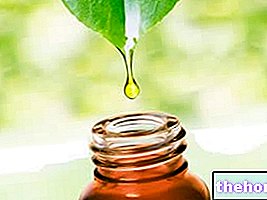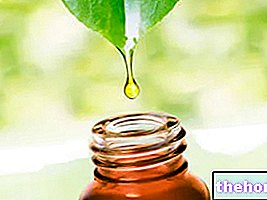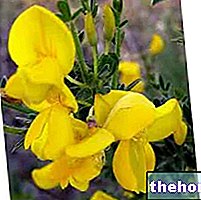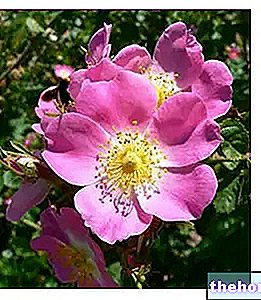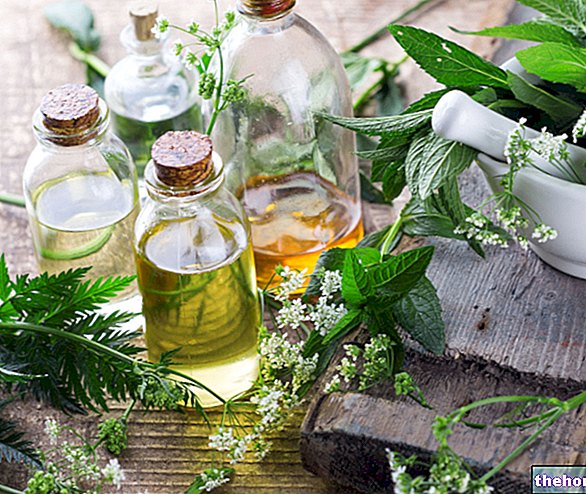
Pharmaceutical knowledge is an important part of Tibetan science and medical art. This doctrine is based on numerous theories and laws, based on logic, study and experience.
Interview with a medical Lama
In which cases is Tibetan medicine best suited?
In my experience, Tibetan medicine is particularly effective with diseases of the mind; but also in gynecological diseases, in problems of the thyroid, kidneys, skin, gall bladder and in cases of enlarged glands.

Q: I've heard of "magic remedies". Could you explain us something about it?
A: Sometimes, in Tibetan medicine, we use remedies that have no active ingredients; we can say that they are "magical". For example the water and cream pills. These two pills, one white and the other red, can be used with water or with a neutral cream. If you use them with the cream, you can spread the cream where you have pain or discomfort. Or put the pills in a liter of clean water (like spring water; but mineral water is fine too). You drink a glass in the morning, for example, or more often, as you it seems better. Keep adding water as you consume it, until the pills have dissolved completely. These pills are made of clay and blessed substances, and they are prepared by chanting many mantras. The red pill is called the red pill. lokyon rilbu or Parnashavari pill. In ancient times, at Segyu monastery in Tibet, they used to make these pills with water from a special spring, near the monastery, which was dedicated to Parnashavari. It was believed that this spring could cure infectious diseases. In Tibet these pills were used a bit for everything, like aspirin here in the West! Since they are very light they were used a lot for children. They are useful in case of headaches, various pains, small wounds and so on. Sometimes they give incredible results even with serious illnesses.
Q: Tibetan medicine is very effective for various diseases. But what really makes it different from other medical systems?
A: Beyond its effectiveness in treating many diseases, an important aspect of Tibetan medicine is the fact that it truly cares for the patient. I mean, the job of an Amji is not just to make a diagnosis and then indicate the treatment, but also to "offer help and positive energy. This is one of the reasons why people go back to Tibetan medicine.
Q: Are we talking about the power of mantras and prayers?
A: Yes. The power of prayers in Tibetan medicine is highly regarded, because our medicine is closely connected with Buddhism. When a doctor administers a medicine, or a therapy, he must generate the thought that this medicine serves to cure the present patient but, at the same time, also all those who suffer from the same disease. In this way it transmits positive energy to all beings. It is the mind of Bodhicitta. Of course, in this way, the patient also heals better, because there is a big difference between a purely material substance and the same substance accompanied by such positive energy.
There is a story in the Sutras about the power of prayers. A man was walking by a canal that was drying up when he saw that there were fish that were dying. Out of compassion, he poured new water into the canal to save them. Then he prayed that the fish would have a good rebirth in the Pure Land of Tushita (in Tibetan Dewa Chen). After some time people came to see him in a dream to thank him. They were the fish he had saved and which by the power of his prayers had been reborn in Dewa Chen. But prayers can also have negative results. There is "another" story about the construction of the Bodhgaya Stupa. When they finished building it, everyone who had contributed to the work was thanked one by one, even the animals. But they forgot to thank the ox who had carried so many stones to build the Stupa. The ox became so angry that he prayed that he could be reborn in conditions that could destroy the Dharma. Much later he was reborn as Langdarma, the infamous Tibetan king who persecuted Buddhism with such fury that he almost succeeded in making it disappear from Tibet.
Short glossary of Tibetan medicine:
Amji in Tibetan means doctor, healer.
Bodhicitta is the "great mind"; the strong determination to attain enlightenment for the benefit of all sentient beings.
Dharma: spiritual teachings, the way to inner development.
Dewa Chen or Tushita: a pure land, a kind of paradise.
Stupa - a special type of construction that generates positive energy
Parnashavari - a feminine aspect of the enlightened mind; wear clothes of leaves.
The fundamentals of Tibetan Medicine
The five elements, Earth, Water, Fire, Air and Space, are the material basis of animate and inanimate phenomena.
The basic principles of Tibetan medical pharmacognosy are based on the doctrine of the five elements. This, in turn, is based on the law of the constitutive uniformity of all material bodies, including the human body and medicinal substances.
To determine the use and efficacy of a medicine, its properties, efficacy, taste and action are also taken into consideration. The physical and chemical constituents of a medicinal plant act as a substrate for the properties and action of the drug.
To proceed with the evaluation of a drug, ie the identification and determination of its quality and purity, various methods are used, but the most important is undoubtedly the sensory evaluation, mainly gustatory and olfactory.
Tibetan Medicine, pharmacognostic aspects "
Select plant Fir Acacia Acerola Sorrel Yarrow Yarrow Yarrow Aconito Adatoda Garlic Agnocasto Agrimonia Alchemilla Alkekengi Aloe Altea Witch Hazel Ammi or Visnaga Pineapple Andrographis Anemone Pulsatilla Angelica Anise Star Anise Japanese Star Anise Bitter Orange Bitter Areca Arnica Harpagophytum Arpagophyte Artemisia Asteragus Basil Asparagus Asparagus Peruvian Asparagus Asparagus Asparagus Hawthorn Boldo Borage Shepherd's Purse Boswellia Bucco Butea superba Cocoa Coffee Cajeput Calamus Calamus Marigold Camedrio Chamomile Roman Chamomile Camphor Cinnamon Ceylon Maidenhair Capuchin Artichoke Cardamom Cardiac Thistle Asian Thistle Carvi Cascara Cassia Catecu Catha Cabbage Celandine Chicory Centaurea Cinnamon Cypress Celandine Chives Cypress Coca Cola Colchico Combreto Condurango Comfrey Coriander Cranberry Barberry American Chrysanthemum Cumin Turmeric Damiana Digital Dioscorea Drosera Dulcamara Dunalilella Echinacea Eder a Ephedra Elenio Eleutherococcus Helichrysum Evening primrose Horsetail Alfalfa Erica Euphrasia Erisimo Escolzia Eucalyptus Farfara Farfaraccio Calabar bean Fenugreek Fennel Phytolacca Frangola Ash Fumaria Japanese Mushrooms Galega Ganoderma lucidum Garcinia Cambogia Mulberry Gentian Broom Ginkgo Ginkgo Guipana Guipana Gynestra Ginkgo Hibelia Gymnasium Hibiscus Guarulp St. John's Wort Horse Chestnut Ispaghul Hyssop Jaborandi Kava kava Konjac Laminaria Cherry Laurel Lavender Lemongrass Lespedeza Lovage Icelandic Lichen Lemon Flax Lippia Licorice Lobelia Hops Maca Marjoram Maize Mallow Manna Marrubio Marrubio d "water Matè Melaleuca Meliloto American Lemon balm Myrtle Myrama Walnut Nutmeg Walnut vomica Olive tree Meadowsweet Ononide Opuntia Oregano Orthosiphon Nettle Poppy Papaya Parietaria Feverfew Passiflora Chilli Perilla Periwinkle Phyllanthus Plantain Picrorhiza Pilosella Pino Pisci dia Podofillo Polygala Grapefruit Parsley Psyllium Pueraria mirifica Butcher's broom Pygeum Quassia Oak Rhubarb Ratania Rauwolfia currant Castor bean Rhodiola Rosehip Rosemary Rue Willow Sarsaparilla Sage Elderberry Sassafras Sedum Ergot Senna Serenoa Repens Soybean Solidago Tansy Taraxus Tamarind Tamarind Tamarind Tamarind Tamarindo Ursina Valerian Vanilla Mullein Verbena Veronica Viburnum Vinca Pansy Mistletoe Vine Withania Yohimbe Saffron Ginger Pumpkin Select disease Juvenile Acne Rosacea Tinnitus Tinnitus Aerophagia Tendon Affections Afonia Aphthae Algias Functional Halitosis Breastfeeding Allergy Anemia Anguish Anxiety Arteriosclerosis Asthrosis Asthrosis Arthritis Arthritis Men Sex Woman Blepharitis and Conjunctivitis Eye bags Bronchitis Gallstones Kidney stones Salivary stones Baldness Androgenetic Candida Fragile hair Caries Headache Cellulitis Motion sickness Cystitis C limaterio Cholecystopathy High cholesterol Ulcerative colitis Colonoscopy Contusions Hematoma Convalescence Couperose Depression Dermatitis Diaper dermatitis Diabetes Diarrhea Erectile dysfunction Dyslipidemia Dysmenorrhea Dyspepsia Disturbances of vision Hemorrhoids Epistaxis Herethism Heart disease Fever Fibromyalgia Gastro-intestinal disease Flatulence Hypertension Fibromyalgia Gastrointomnia Jaundice Laryngitis Renal lithiasis Toothache Sore throat Thinness Menopause Meteorism Mononucleosis Alzheimer's disease Crohn's disease Nausea Vomiting Obesity Dark circles Onychomycosis Osteoporosis Dry skin Periarthritis Piorea Low pressure Prostatitis Psoriasis Colds Breast fissures Anal fissures Gastro-nasal rhinitis Senescence Premenstrual Syndrome Sinusitis Quit smoking Overweight Fatty liver Constipation Stomatitis Stress Cough Triglycerides high Ulcer Burns Nails Brittle flashes Heat Warts Dizziness Properties herbal Tanning Abortive adaptogenic Aphrodisiac bittering analgesic anesthetic anorectics analgesic antacid anti-allergic anti-asthmatic Antibiotic catarrh Anticellulitiche anticonvulsant Antidiaforetiche antidiarrheal edematous anthelmintic antiemetic Antiemorroidarie antiphlogistic Antiidrotiche Antinevrotiche Antioxidants antipyretic antirheumatic antiscorbutic Antiseptic antispasmodic anti-uric Aperitive Flavoring Astringent Balsamic Bechiche Capillarotrope Cardiotonic Carminative Cathartic Caustics Healing Cholagogues Choleretic Dyes Decongestants Deodorants Purifying Diaphoretic Cleansers Disinfectants Detoxifiers Thirst quenching Diuretics Exciting Emetics Emmenagogues Emollients Hemostatic Energies Hepatoprotectors Expectorants Eupepticus Moisturisers Galactosensitizers lanti Hypertensive Hypnotic Hypoglycemic Hypotensive Irritants Laxatives Soothing Narcotic Nerves Nutrients Odontalgic Pectoral Purgative Revulsive Remineralizing Refreshing Rubefacient Scialagoghe Sedative Soporifugas Sneezing Stomachic Stomatics Narcotic Vascular Tightenitis


